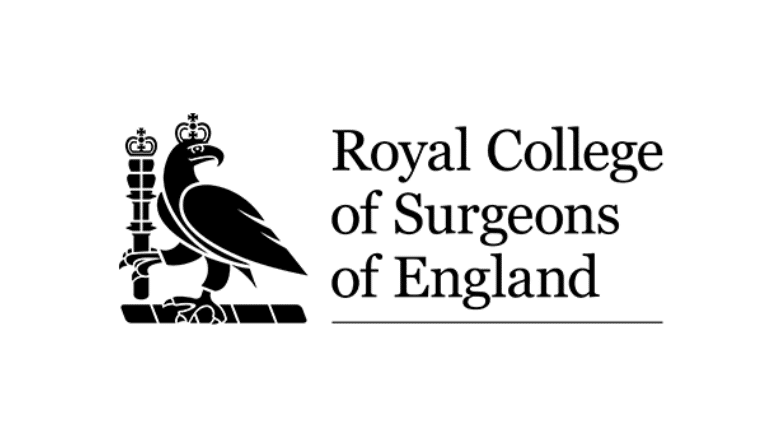Table of Contents

Do you want your skin to appear tighter and smoother? Are you tired of wrinkles and flabby skin? You don’t have to look older than your years – you can turn back the clock with a facelift.
RELATED: What is the best age for a facelift?
What is a facelift?
As we age naturally, our skin begins to lose elasticity. Wrinkles around the lips and eyes start to form and begin to make us look older. Some people feel the ageing on their faces does not match their true age or how old they feel. Others may have undergone drastic weight loss, which can alter the appearance of their face or leave them with excess skin. Fortunately, a facelift can be a solution to help turn back the clock and rejuvenate your face. A facelift works to tighten any loose skin on the face that is below the eyes. A facelift can be done without the results looking obvious. Instead, you will have a natural-looking face but with fewer wrinkles and loose skin.
RELATED: Are facelift results permanent?
If you would like the skin above the eyes tightened, you may be interested in undergoing a brow lift.
Am I a good candidate for facelift surgery?
You will be an appropriate candidate for a facelift if you:
- Want your face to appear more youthful
- Have wrinkles or sagging skin on the face that you want to remove and tighten
- Still have some skin elasticity in the face
- Want to feel better about your appearance
- Have realistic expectations about what the procedure can achieve
There is no upper age limit to who can have this procedure. However, those who are older will naturally have less skin elasticity, and therefore the results may differ from patients who are in their 40s to 60s.
RELATED: Face Lift For Men
What is the best age for a facelift?
There is no ideal age for a facelift. Different people age at different rates and to different degrees. Although the normal facial ageing process causes facial skin and underlying muscle to loosen or sag over time, the effects of ageing can occur at any time. However, significant sun exposure will accelerate the process. In the UK, most surgical facelift procedures are performed on women and men between the ages of 40 to 56.
RELATED: What is the Best Age for a Facelift?
Over the last ten years, there has been an explosion in the number of techniques to address facial ageing in younger patients as younger people are increasingly presenting to discuss options to maintain their youthful appearance. Leading facelift surgeons in London agree that patients between the ages of 30 and 39 are particularly interested in brow lifts (forehead lifts) and blepharoplasty surgery (eyelid surgery to remove excess pockets of skin and fat around the upper and lower eyelids. While blepharoplasty and browlifts are full facelifts, they are still designed to address facial rejuvenation. Centre for Surgery offers leading treatments to cater for younger patients’ needs.
If you are not keen on the idea of having scars from facelift surgery, the Centre for Surgery also offers a ‘scarless facelift ‘ utilising the innovative FaceTite platform. A FaceTite procedure utilises minimally invasive bipolar radiofrequency to tighten the skin of the neck and jowls combined with Morpheus8 RF microneedling. By using both FaceTite and Morpheus8, your surgeon is able to address mild to moderate skin laxity in a minimally invasive manner and without the downtime of a traditional facelift. In properly selected candidates, a FaceTite procedure can be performed under local anaesthetic (with or without oral sedation). Microlipo may also be performed on the lower face and neck to define the jawline.
Your facelift surgeon may also wish to combine the FaceTite/Morpheus8 combination with a mini facelift to extend the benefits of partial skin excision. In this case, the procedure would be performed with TIVA general anaesthesia.
How is a facelift performed?
Before undergoing a facelift procedure, you will meet with the surgeon to have a consultation. This will allow the surgeon to determine whether or not you are a suitable candidate for a facelift. On the day of the procedure, you will be given a general anaesthetic. You will be asleep for the whole duration of the procedure, so you will be unable to hear or feel anything. There are various different methods for performing a facelift. You and your surgeon will decide on the best method for you during your consultation. Generally, the surgeon will make incisions around the hairline in front of your ears. If you are wishing to improve the jawline because of sagging jowls, the surgeon may also make an incision beneath the chin. Surplus facial skin and any excess fat will then be removed. The skin is then pulled back and upward and then stitched into the new position. In cases where it is needed, the facial fat and tissue will be redistributed or added to the face with facial fat transfer.
RELATED: What Are My Options For A Facelift?
What is the recovery period like after facelift surgery?
After the surgery, a bandage will be wrapped around the face to cover the incisions and help with bruising. You will have to avoid getting these bandages wet for the first two days in order to minimise the risk of any infection occurring. You will be able to return home the same day as the procedure once the effects of the anaesthetic have worn off. You will not be able to drive yourself home and will need someone to drive you from the centre or have a chaperone. You will have to avoid driving for several days following the procedure – your surgeon will be able to tell you the specific amount of days, which can vary from person to person. After surgery, it is normal to experience bruising, swelling and some mild pain and discomfort. Bruising and swelling should fade after about two weeks. You have to avoid any strenuous physical activity for at least two weeks. You will have to get plenty of rest during the recovery period. Ensure you do not sleep on your face or your sides, but sleep with your head propped up for several days. This will help to reduce the swelling.
RELATED: Facelift Recovery – Top Tips For Quicker Healing
Can injectables achieve results similar to a facelift?
Although neurotoxins and dermal fillers have revolutionised how we treat the ageing face with non-invasive techniques, these do not replace surgical procedures. Rather they complement as opposed to replacing.
RELATED: Common Facelift Myths
Key point: Big degrees of facial ageing require correspondingly big procedures for proper correction.
Facial wrinkles and volume loss are poorly treated with a facelift. This is where injectables are beneficial. Whether it is to soften lines or add subtle volume to targeted areas, facial injectables work really well. Problems occur when too much is attempted with injectables alone, often leading to over-volumisation—the so-called ‘pillow face’.
Let’s go through a little on how neurotoxins and dermal fillers actually work:
Neurotoxins work by blocking the neuromuscular junction. This reduces or even eliminates the electrical signals from the brain to the facial muscle, thus inhibiting the movement of the facial muscle. The result is a reduced severity of the associated wrinkles. However, neurotoxins do not address volume loss, a prime component of facial ageing, nor treat loose skin, descended muscle or fat atrophy.
There is an increasing trend towards dermal filler treatments as an alternative to facelift surgery. Facial fillers are made up of various substances. The most commonly used substance in most modern HA fillers is hyaluronic acid. Other less commonly used substances, such as poly-L-lactic acid or calcium hydroxyapatite, work for longer but are not reversible, unlike HA fillers. HA fillers act to restore the lost volume due to the atrophy of soft tissue and fat volume that occurs with the ageing process.
Facial injectables can reduce the appearance of fine lines and deeper folds, and more viscous HA fillers can even add volume to certain areas, including the temples, cheeks, chin, and lips. However, these results are temporary and, for many patients, do not provide enough correction of the jawline, jowls, cheekbones and loose and crepey neck skin. Fillers still have an important role – they are treatment options for patients who may not be ready for facelift surgery or perhaps have had facelift surgery already and desire a ‘tweakment‘ to refine or fine-tune the results from surgery.
RELATED: Key Questions to Explore Before Deciding on Facelift Surgery
Interested in Facial Rejuvenation Treatments? Contact Centre for Surgery Today
If you’re considering facial rejuvenation treatments to enhance your appearance and boost your confidence, Centre for Surgery is your ideal destination. Our team of highly skilled and experienced professionals is committed to delivering the highest standard of care and the most effective treatments available.
At Centre for Surgery, we provide a comprehensive range of facial rejuvenation procedures designed to meet your unique needs and aesthetic goals. Whether you’re interested in surgical options or non-surgical treatments such as injectables, our experts possess the expertise to achieve exceptional results.
Take the first step towards a refreshed and youthful appearance. Contact Centre for Surgery today to schedule your consultation and discover how we can help you attain your desired look.
You can reach us at:
- Phone: 0207 993 4849
- Email: contact@centreforsurgery.com
- Address: 95-97 Baker Street, London W1U 6RN









